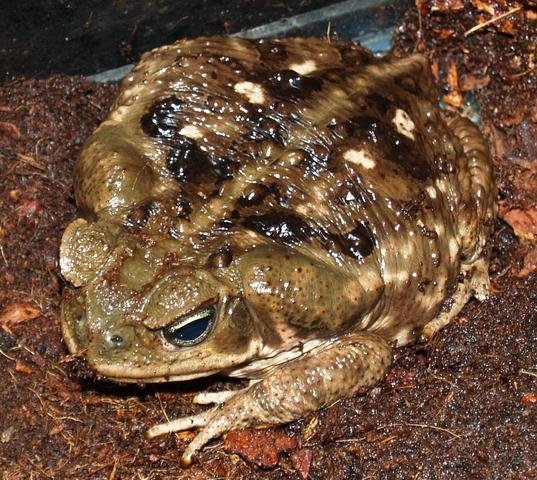
Amphibians
Cane Toad (Rhinella marina)
https://www2.hawaii.edu/~yamaga/canetoads.html
There are over 8,000 species of amphibian in the world (Amphibiaweb), over 400 of those live in the Amazon rainforest (Amazon Conservation). Amphibians are mostly carnivorous and play a large role in controlling arthropod populations. However, some species of amphibian are omnivorous or herbivorous. Amphibian populations are increasingly in trouble for a number of reasons, but primarily due to invasive fungi species that cause fatal infections. Amphibians are vertebrates and have emotions, and thus suffer when they die. So, the extinction of amphibians is not only a loss of uniqueness, but also involves the amphibians suffering. There are a couple species of amphibian that stand out.
Cane Toad
The cane toad (Rhinella marina) is the largest species of amphibian in the Amazon rainforest, and can grow up to 9 inches long (Florida Fish and Wildlife Conservation Commission). In places like Australia and Florida where they are not native cane toads can be an absolute menace. However, in the Amazon rainforest where they are native they are an integral part of the ecosystem.
Suriname Toad
The Suriname toad (Pipa pipa) is a very flat species of frog and they have a very unusual way of taking care of their eggs. After mating the male places the eggs on the female’s back, the eggs stick and become imbedded in the female’s back, and a membrane grows over them. The eggs remain there until they hatch and the tadpoles emerge from her back (San Deigo Zoo Wildlife Alliance).
References:
Amphibian species by the numbers Amphibiaweb
https://amphibiaweb.org/amphibian/speciesnums.html
Birds and Wildlife Amazon Conservation Association
Cane Toad Florida Fish and Wildlife Conservation Commission
Suriname Toad San Deigo Zoo Wildlife Alliance